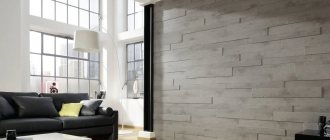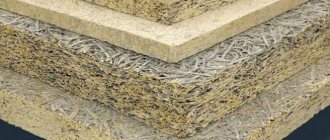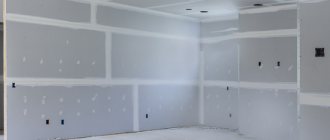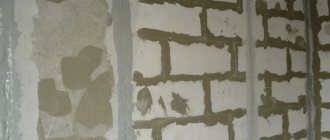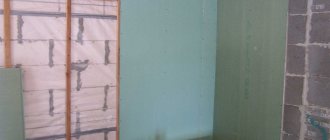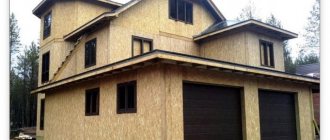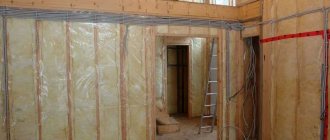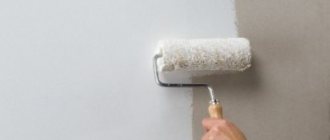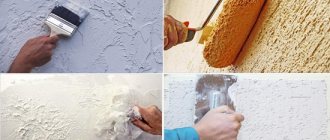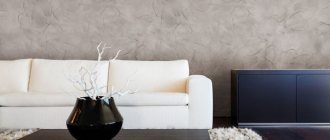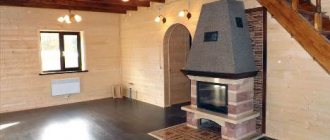Wall finishing materials
Until recently, walls in private houses were simply covered with plaster, which was painted with water-based paints or wallpaper was glued onto them. Even earlier, the walls were simply whitewashed with lime. Today, the variety of materials used for wall decoration is so huge that it becomes more and more difficult to choose every year. Therefore, most consumers seek advice from professional designers who have information about all finishing materials. They are like fish in water in this category of building materials.
So, let's figure out what finishing materials exist.
Wallpaper
This material is still very popular today. Moreover, quite a wide variety of it has appeared on the market:
- paper;
- non-woven;
- vinyl;
- glass wallpaper;
- photo wallpaper;
- metallized;
- and others, others, others.
The assortment is wide, the choice is huge both in color, texture and structure. Manufacturers even offer paintable wallpaper. They have an original white color that can be repainted up to 15 times, choosing any paint.
Variety of wallpapers for wall decoration Source vistcard.ru
In fact, wallpaper is still popular, and its demand is not decreasing. The reason is the incredibly huge number of species and subspecies. At the same time, the market offers wallpaper that imitates other building materials. For example, brick, stone, sand, leather, wood and so on. That is, you can create a unique interior in your home with little money, decorating it in any style.
The only requirement for the wallpapering process is that the wall is level. Therefore, wall surfaces are carefully plastered, puttied and sanded. If the house is wooden, then its walls are covered with plywood or plasterboard; today they have been replaced by OSB boards. It is the leveling of the wall surface that increases the cost of finishing materials. Wallpaper itself is an inexpensive material, of course, in comparison with other materials.
Regarding the choice of wallpaper, some criteria should be noted:
- paper wallpaper is short-lived , afraid of moisture and temperature changes;
- vinyl wallpapers are the thickest , they easily cover minor wall defects and differences in plane;
- leveling layer must be placed under non-woven wallpaper , because this type of wallpaper is translucent and all dark spots can be seen through it;
- photo wallpaper for the interior design of the room , then they will fit perfectly into the room;
- today you can use it, where the owner of the house chooses a drawing, pattern or photograph.
Photo wallpaper on the wall of the house Source plejadatapet.pl
Paints
Let's start with the fact that decorating walls in a private house with paints is at the peak of popularity. Their variety on the market is not as large as that of wallpaper, but they are represented by a good line. We must immediately make a reservation that before painting the walls must be leveled to the maximum. Craftsmen often apply several layers of finishing putty to achieve the perfect result.
Variety of paint and varnish products Source m.2gis.ru
What manufacturers of paint and varnish products offer:
- Acrylic paints . After drying, this material forms a durable film on the walls that can even be washed with water. The colors of acrylic paints are bright and saturated. But this material belongs to the category of “non-breathable”.
- Silicone . This is a breathable material that is applied to the surface of the walls in a fairly thick layer, so it covers minor defects and flaws well. Forms a durable film. Disadvantage: the price is high.
- Silicate . They are based on liquid glass, hence the excellent strength characteristics. But for the same reason, it is impossible to apply another material to a wall coated with silicate paint. If you need to carry out repairs, you will have to get rid of this paint coating. In this case, the paint itself applies only to mineral surfaces: plaster or putty. It is better not to use metal, polymers, wood under silicate paint - it will peel off.
Ceiling finishing
It is best to start repair work from the ceiling, since during the work you can damage the floor or stain the walls. Finishing the ceiling is considered the most difficult due to the inconvenience of applying materials, but even a beginner can cope with it.
The owner of a private house has a wide range of finishing materials to choose from; in addition, designers always come up with something new and original. Popular finishing options: suspended or suspended ceilings, painting or whitewashing, wallpapering the ceiling. Initially, you need to level the surface with plaster and putty, saturating the ceiling with a primer, after which you can apply the final coating.
Dropped ceilings
Initially, you need to create a structure, secure it by attaching it to the ceiling. With the help of such ceilings you can create a complex lighting structure, as well as create multi-level ceilings. The base in the form of a structure must be puttied and painted or covered with wallpaper. The disadvantage of this type of ceiling is that it reduces the height of the room, which means there will be less space.
Stretch ceiling
The design of such a ceiling is also capable of hiding the ceiling and gives access to various lighting options. The structure must be attached directly to the walls. With the help of stretch ceilings you can create a unique design, as they have a wide selection; you can diversify the ceilings with a print or pattern. You can also use a combination of stretch and suspended ceilings.
The design is a profile with a special latching mechanism that is attached around the perimeter of the room. It is better to entrust the installation of suspended ceilings to professionals.
Wallpapering
Wallpapering the ceiling is a budget option that allows you to create an interesting design. Finishing is considered difficult, as it requires skills and equipment, and besides, it is impossible to do it yourself. For finishing you can use only liquid or special ceiling wallpaper. The use of vinyl wallpaper is strictly prohibited, and the choice of wallpaper by color will pleasantly surprise every demanding owner of a private home.
Whitewashing and painting
This option for finishing the ceiling has been known to everyone for a long time; it is the easiest to implement. To carry out finishing work, you do not need knowledge or special skills; you can do whitewashing or painting yourself. The advantage lies in the low cost of the work and its simplicity. For whitewashing, quicklime is used, and for painting, you can choose any suitable paint; the color range is unlimited.
Video description
From the video you can learn how to choose the right paint:
- Water soluble . This is a large group of paints for interior decoration of house walls. From the name it becomes clear that the composition is diluted with water, which evaporates after application to the wall. Masters believe that this is an ideal option for interior decoration of residential premises.
- Latex . It’s clear here – the base is latex. Such paints belong to the “washable” category. A powerful film that remains on the wall surface protects the painted surface from almost all types of loads. The best option for wet rooms. Experts recommend painting wallpaper with the latex variety.
- Alkyd . They contain linseed or soybean oil, organic and acidic substances. These are bright colors, quite durable and highly wear-resistant. Ideal for residential premises.
Painted walls of the room Source trendideas.net
Which paint to choose? Even a specialist cannot answer this question. Just take into account that it is better to use water-soluble ones in bedrooms, acrylic or latex in hallways. In wet rooms it is better to use alkyd, latex and acrylic.
Decorative plasters
Another popular category of materials for home interior decoration. These are plaster mortars, with the help of which they not only level the walls of a private house, but also form the decorative filling of rooms. What does the modern market offer today?
See also: Catalog of companies that specialize in finishing materials.
Textured plaster
This is a highly viscous and coarsely dispersed solution, the fillers of which are various types of fibers, stone chips, mica, pebbles, glass, etc. Can be applied to brick, concrete, wood and plastered walls.
Manufacturers offer a wide range of textured plasters that create different structures on the walls. The most popular: bark beetle, lamb, fur coat. Typically, such plasters are made based on cement. The peculiarity of this material is that the texture appears immediately after applying the plaster layer.
Textured plaster “Bark beetle” Source vseprobki.ru
Structural
This finishing material has a thin-layer structure, in which the base is acrylic or silicate, and the fillers are quartz or marble chips. Therefore, its appearance is a heterogeneous granular surface. Today, manufacturers offer a fine-grained structure that is very similar to even and smooth plaster.
The structural material is easy to lay even on plasterboard, chipboard, plywood and OSB. Not to mention the brick or concrete surface. It is not recommended to use this type of finish in damp rooms.
Structural plaster for interior work Source talkdevice.ru
Venetian plaster
Of all the plaster mixtures, this is the most expensive. The process of applying this type of plaster is also complicated. It is applied in several thin layers - up to 6 layers, each of which is well dried before applying the next one.
The end result is an imitation of marble or onyx. Today, manufacturers offer a variety with imitation of precious metals.
Venetian plaster on the wall inside the house Source vi.decorexpro.com
Specific types of plasters
We will not describe all the plaster mixtures present on the modern building materials market, we will simply list them:
- colored;
- rollerball;
- latex plastic;
- wet silk;
- sea breeze.
Lining
Lining remains the main material for finishing a country house or cottage. This is an environmentally friendly material. Hence its great popularity. Lining is a wooden board, planed, of natural moisture. It has a tongue on one side and a groove on the other side for joining along the plane. Lining is used as a decorative finishing material for covering walls and even ceilings. Clapboards are divided into three classes;
A - knotless lining;
B - a small number of knots;
C - knotty lining of low quality.
The lining can be coniferous or hardwood. Coniferous wood is the most basic type of lining, which is used in interior decoration. Hardwood is used in rooms with an aggressive environment, such as baths and saunas. Because they do not release resin. Eating larch clapboard. This is a more expensive material. It can be left untreated and will remain unchanged for many years.
Video description
The video describes the types of decorative plasters and methods of applying them to wall surfaces:
Tile materials
Do not forget that tile materials have always been in demand. And if ceramic tiles are used in wet rooms, then stone (artificial or natural) is used in residential areas. At the same time, entire walls were lined with stone, which fit perfectly into the interior of private houses.
True, stone material is not a cheap pleasure. Therefore, manufacturers offer a cheap alternative - gypsum elements stylized as stone. Look at the photo below, which shows walls finished with gypsum material. Let us add that gypsum for interior wall decoration is an ideal option. It breathes, does not emit radiation, does not emit harmful substances, the material is lightweight and easy to install.
The walls of a private house, lined with gypsum bars, stylized as natural stone Source hi.decorexpro.com
Finishing the interior walls of a panel-frame house
One of the advantages of panel-frame houses is the ability to combine interior and exterior decoration. The finishing used in the construction of a frame house provides many functional and aesthetic possibilities. You can build a house for yourself in any architectural style and color scheme.
In frame houses, the presence of internal vapor and waterproofing is of no small importance.
Since external environmental sources such as rain, wind, snow, sun affect the house, but basically it is all protected by the external cladding. Inside the house, the main source of humidity is human activity. This includes cooking, cleaning, washing, and so on. Accordingly, if steam and waterproofing is not done inside the house, this will lead to moisture in the wooden floors and structures. And this is the habitat for spores of fungi and insects.
There are a lot of finishing options for panel-frame houses. For example, sheets of plasterboard on a metal profile. Subsequently, the structure is wallpapered or painted. You can lay laminate on the floor and make a suspended ceiling.
You can also use lining in a frame house, depending on the wishes of the owner. In such houses, little “wet” work is done, so the interior finishing of a frame house is done faster.
Gypsum panels
For unknown reasons, this material is not particularly popular. For example, manufacturers today offer gypsum panels covered with vinyl plate. Excellent cladding with high strength and decorative qualities. This is one hundred percent moisture-resistant material.
Probably, consumers are put off by complex installation, which increases the overall cost of the work. The cladding is assembled onto a frame made of aluminum profiles, which comes complete with gypsum vinyl panels.
Cork
And the last finishing material in our review is cork panels. It should be noted right away that this is the most expensive among panel materials. But cork has many advantages:
- increased heat and sound insulation characteristics;
- 100% environmentally friendly ;
- excellent external data ;
- high moisture resistance ;
- this material does not burn , but only smolders, the process begins at a temperature of +350C;
- does not absorb odors;
- Easy to install - simply stick it to the wall.
Choice of finishing cladding
Preference is given to coatings that have the necessary parameters of strength, endurance, fire, and environmental safety. The installation process involves a different list of works (structural features of the floor structure). When choosing, quality characteristics are taken into account. Appearance is assessed. An analysis of the possibility of self-installation is required.
The best types of cladding:
Parquet board.
High wear resistance. Excellent stylistic qualities. Easy to install. For high-quality installation, a perfectly flat base is first prepared.
Engineering board.
A textured product based on plywood, veneer, and additional materials. Features of production provoke high levels of endurance, reliability, and ease of installation. The price is affordable. The appearance is very interesting and original. The perfect addition to luxury design.
Laminate.
Based on wood components. Has high relevance ratings. Resistant to many negative influences. The special structure of the slabs allows you to obtain not only style, but also additional heat preservation qualities. An excellent wood-look design option. Installation is quick. Requires creation of a substrate.
Tile.
Combines with the “warm floor” system. Has increased abrasion resistance. Manufacturers offer different models with decorative coating. There is an optimal, stylish, graceful solution for any type of interior. It has increased parameters of resistance to dampness and moisture.
The floor is cork.
Modern, durable, natural, resistant to various negative aspects of influence (temperature changes, high humidity), cladding with excellent aesthetic properties.
Decorating the interior walls of a stone house
A stone house (monolith, aerated concrete blocks) looks like an ordinary city apartment. Consequently, the decoration in such a building is very similar to the decoration in an apartment. The only negative is that it is impossible to begin the main internal work immediately after erecting the walls for the roof. This is due to the fact that concrete is cellular, and when it dries it shrinks. You need to wait about 28 days. This increases the time required for properly carried out repairs and construction of a private home.
When finishing the interior walls of a house in a stone house, all communications are first laid;
- electrical wiring;
- wastewater treatment plants;
- water supply;
- installation of heated floors (if available)
After this, the finishing of the walls, floor, and ceiling begins. The inside of stone houses is finished in the same way as an apartment. Sometimes additional insulation is required. In any case, if you have built a stone house, you need to think about insulation. Otherwise, this will lead to unnecessary energy costs in the future.
The main mistake when building and finishing the interior walls of a country house is failure to comply with the temperature regime. Everyone wants to finish construction as quickly as possible. But it’s better not to rush, to do everything right.

